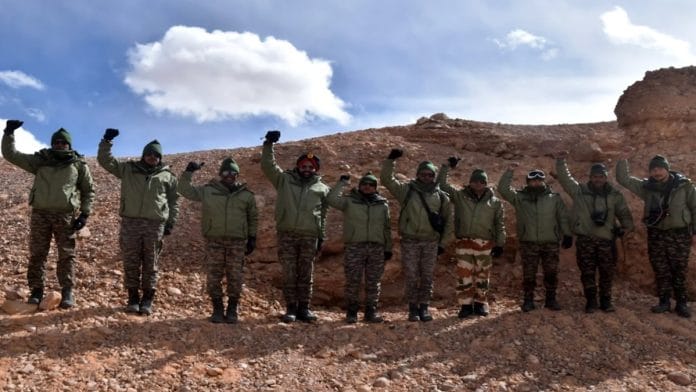New Delhi: The Army Monday carried out its first patrol in the Depsang Plains, almost two weeks after it signed a disengagement agreement with China’s People’s Liberation Army (PLA).
Sources in the defence and security establishment told ThePrint that while there are patrolling points (PP) 10, 11, 12, 12A and 13 in the Depsang Plains, the said patrol was carried out till only one point, as decided by the two sides.
They said that according to the agreement reached, initial patrols will be carried out only till one or two PPs. This is because covering all of them in one go will be a herculean task and the aim is to take things slowly to build up trust between the two sides.
“Everything is happening in accordance with the understanding reached between the two sides. The first patrol was carried out today,” a source said, adding that the first patrol left in the morning and returned by afternoon.
As reported by ThePrint 30 October, India and China disengaged from the two face-off points of the Depsang Plains and Demchok in eastern Ladakh, pulling back troops to the pre-2020 positions and also dismantling all check posts, defensive positions and housing and shelters created in the past four-and-a-half years.
Both countries conducted “physical verification” of each other’s pullout, breaking down all additional structures created since 2020 in the Depsang Plains and Demchok.
Limits on patrolling
While Demchok patrolling has begun, the sources said that Indian troops will not be able to patrol Charding La, a pass on the border of India and China in Ladakh’s Demchok region.
A decision has been made to limit the patrolling to twice a month with active cooperation from both sides, ThePrint reported earlier.
While the aforementioned Army sources emphasised that the agreement was specific to only Depsang and Demchok, sources had told ThePrint earlier that an understanding was also reached to restart patrolling in areas where buffer zones were created—the northern banks of Pangong Tso, Galwan Valley, Hot Springs in Chang Chenmo Valley, and Gogra—where disengagement took place by September 2022.
At the time, Indian and Chinese military commanders were still in talks over patrolling in the buffer zones created earlier, and that would be a separate agreement, the Army sources said.
An understanding has also been reached to allow “escorted patrolling” by the Chinese in the contested Yangtse region of Arunachal Pradesh’s Tawang and possibly in another area. It is not immediately known when this process will start.
Yangtse is now heavily dominated by the Indian Army. Prior to 2020, the Chinese army would patrol a particular region in Yangtse, one of the contested points along the Line of Actual Control (LAC).
(Edited by Radifah Kabir)






